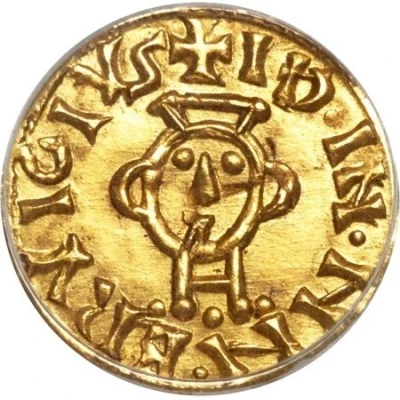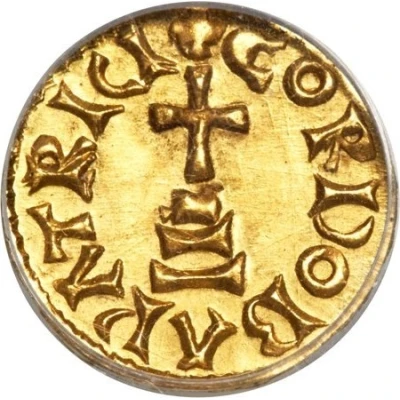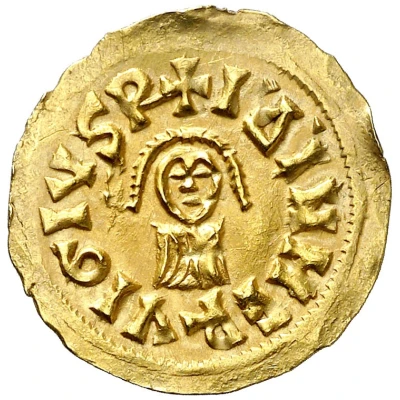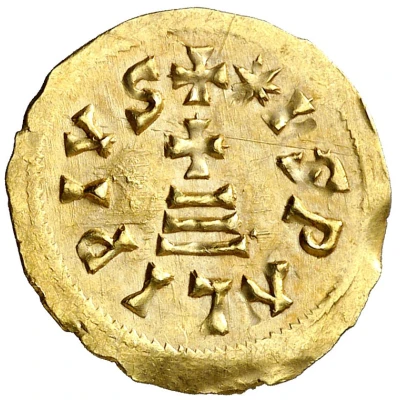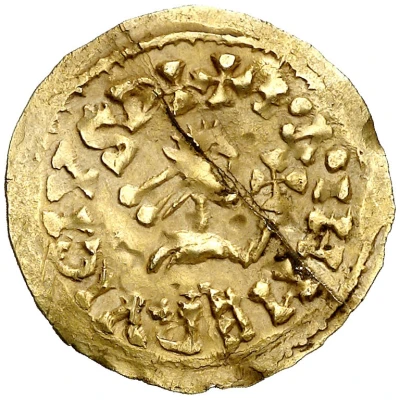
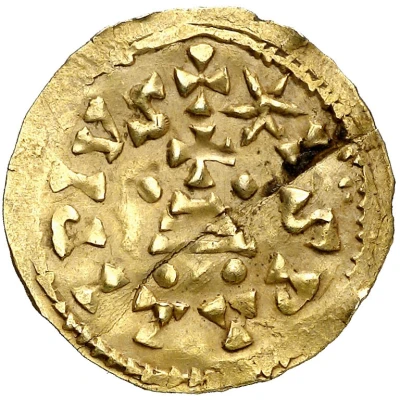

© Aureo & Calicó S.L., subastas numismáticas
Tremissis - Erwig Ispali
| Gold | 1.42 g | - |
| Issuer | Visigothic Kingdom |
|---|---|
| King | Erwig (680-687) |
| Type | Standard circulation coin |
| Years | 680-687 |
| Value | 1 Tremissis |
| Currency | Tremissis |
| Composition | Gold |
| Weight | 1.42 g |
| Shape | Round (irregular) |
| Technique | Hammered |
| Demonetized | Yes |
| Updated | 2024-10-04 |
| Numista | N#194270 |
|---|---|
| Rarity index | 100% |
Reverse
Script: Latin
Lettering: + ISPALI PIVS
Interesting fact
The Visigothic Kingdom's Tremissis - Erwig (Ispali) coin, made of gold and weighing 1.42g, is interesting because it was used as a form of currency during a time of significant cultural and political change in Europe. The Visigoths were a Germanic tribe that had conquered much of the Iberian Peninsula and were in the process of establishing their own kingdom, which would eventually become one of the most powerful in Western Europe. The fact that they used gold coins as currency speaks to the wealth and influence of the Visigoths, and the fact that they were able to produce coins with a consistent weight and purity of gold suggests a high level of technological and economic sophistication. Additionally, the design of the coin, which features an image of the king and various symbols, provides insight into the Visigothic artistic style and cultural beliefs of the time. Overall, the Tremissis - Erwig (Ispali) coin is a fascinating artifact that provides a window into the economic, cultural, and political landscape of 7th century Europe.
